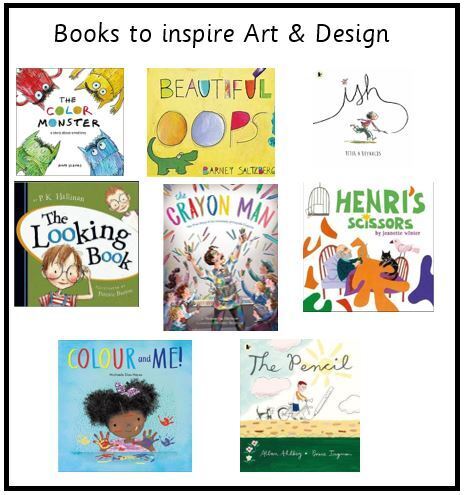Curriculum - Art & Design
Welcome to our Art & Design Curriculum page. The website is currently undergoing some exciting updates. Content is gradually being added. The website will be finalised by April 2024.
At Bridgtown Primary School, we believe that Art and Design allows pupils to think creatively, make ambitious choices and express themselves to become inspirational young artists. With an exciting, engaging curriculum, we expect our children to become confident, motivated and independent learners striving to achieve.
Curriculum Rationale
At Bridgtown Primary School we provide our children with opportunities to express themselves in a creative, imaginative manner and through exploration. The curriculum is designed to enable children to progressively embed the key knowledge and skills to develop as an artist. Each unit in the Art and Design curriculum covers the National Curriculum requirements following a sequence of lessons building on children’s knowledge and skills. Pupils learn Art and Design through the four units in the Kapow scheme of work. The Kapow Scheme is used as a basis point to ensure skill coverage across the curriculum
The four units of work are:
- Drawing
- Paint and mixed media
- Sculpture and 3D
- Craft and Design
These units are taught at the same time across the school which shows clear progression of the skills and knowledge previously taught and how they are reapplying these skills and knowledge to develop their learning and understanding of the importance of art in the curriculum.
Our scheme of work will enable pupils to meet the end of key stage attainment targets in the National curriculum and provide opportunities for pupils’ to work towards the Development Matters statements and the Early Learning Goals.
Art and Design is designed as a spiral curriculum where skills and knowledge are built on progressively. Each year, pupils revisit key concepts and build on their prior knowledge in greater detail. Children’s interests are captured through themed learning, there are many opportunities in the curriculum for cross-curricular learning., giving children motivation and meaning for their learning. Lessons incorporate a range of teaching strategies from researching into the work of other artists, designing their own artwork, using tutorials to aid learning and some practical approaches outside of the classroom environment. This variety means that lessons are engaging and appeal to those with a variety of learning styles.
Art and Design aims to inspire pupils to be passionate and creative when it comes to their artwork. We want pupils to develop the confidence to make ambitious choices, take risks, share their views on the work of other artists and be reflective learners who evaluate their own work and the work of others.
Art & Design in EYFS
In Early Years, Art and Design incorporates many aspects of the Early Learning Goals. Children are encouraged to explore different media, how media can be used to create different effects and develop specific skills and techniques. They experiment with colour, design, texture, line and form. In Early Years, the children are given access to creative opportunities on a daily basis both indoors and outdoors, these areas are well resourced with lots of different materials and media to explore with. Children are able to create artwork on small and larger scales supported by our outdoor area. As well as creating their own art, they are also encouraged to discuss their work and share ideas with others to promote their communication and language skills and develop their confidence.
Our Early Years Art and Design curriculum is designed:
- For everybody to access, regardless of their background.
- To develop a child's imagination, creativity and their ability to use media and material.
- To encourage pupils to explore, observe, solve problems and work cooperatively.
- So that children can learn about the world around them.
- To develop children’s communication skills by sharing ideas about their work and others around them.
The intended impact of implementing Art and Design in Early Years should allow pupils to:
- Meet the relevant Early Learning Goals and Development Matters Statements.
- Become creative, allow children to take risks and explore with a range of resources and develop their work to achieve their intended outcome.
- Work together independently and cooperativity with others, listening to different opinions and using this to influence decisions.
What does Art and Design look like in EYFS?
Art & Design in KS1 & KS2
KS1 & KS2 blurb
KS1 & KS2 overview








